Thai Coconut Custard Better Than Any Restaurant Dessert
Thai Coconut Custard is more than just a treat it’s an invitation to savor the warm, sweet essence of Thai tradition in every silky spoonful. Made with only a few humble ingredients, this dessert has a reputation for being deeply comforting yet irresistibly exotic.
At JustThaiRecipes, our journey started with that same love for traditional Thai flavors. As Lina, the founder, shares on the About page, the blog was born from her passion to bring bold Thai flavors to home kitchens across the world. Together with her partner, Lina created a culinary space where home cooks can explore the sweet and savory heart of Thai cuisine, with every recipe tested and infused with personal family heritage.
And among all the Thai desserts featured on the site—from Thai Mango Sticky Rice to Coconut Pudding with Tapioca Pearls—Thai Coconut Custard stands out for its elegance, ease, and unforgettable taste.
In this guide, we’ll explore everything you need to know about this silky Thai dessert. You’ll learn its traditional roots, what makes it different from coconut cream, why it sometimes comes in a surprising green color, and how to master the Thai coconut custard recipe easy style right in your home kitchen.
Whether you’ve never heard of it before or you’re already craving your next bite, keep reading. This deep dive will transform your appreciation of this creamy masterpiece.
Table of Contents
Table of Contents
Understanding Thai Coconut Custard
What Is Thai Coconut Custard?
At its core, Thai Coconut Custard—known in Thai as Sangkaya—is a soft, rich dessert made from a blend of eggs, palm sugar, coconut milk, and a hint of fragrant essence like jasmine or pandan. It’s gently baked or steamed until it sets into a firm, creamy consistency.
While the technique might remind you of a flan or crème caramel, the flavor profile is distinctly Thai. The tropical notes of coconut milk, combined with the earthy sweetness of palm sugar and the aromatic lift from floral extracts, give it a personality all its own.
If you’ve been searching for a Thai coconut custard recipe easy enough for home cooks but still authentic, you’re in the right place. This dessert is not just easy to make, it’s also gluten-free, naturally dairy-free, and bursting with wholesome flavor.
Why Is Thai Coconut Custard So Special?
Most Thai desserts are centered around natural ingredients like rice, fruit, and coconut milk. Thai coconut custard with coconut milk stays true to this theme. What makes it special is how just four to five ingredients come together in such a harmonious way. The result? A smooth, velvety custard that delivers both subtle sweetness and deep richness.
One of its biggest charms lies in its versatility. While it’s often enjoyed on its own, it’s also famously paired with sticky rice, transforming it into one of Thailand’s most beloved street desserts: Thai custard and sticky rice.
And if you’re a fan of fusion desserts, you’ll be happy to know there’s even a cake version—Thai coconut custard cake—that layers the custard on top of sponge cake for a textural contrast.
The Cultural Roots of Thai Coconut Custard
Historically, Thai custard recipes were influenced by a blend of local ingredients and foreign culinary techniques. The use of eggs and steaming methods were adopted centuries ago, likely from Portuguese influence. But Thai cooks made the recipe their own by incorporating coconut milk instead of dairy and sweetening it with palm sugar instead of refined white sugar.
Today, it’s a dessert you’ll find across Thailand—from night markets to temple offerings. It’s often served during celebrations, religious holidays, and even as a nostalgic comfort food in Thai homes.
And if you’re wondering how this custard fits into the bigger Thai dessert family, think of it as a cousin to Thai desserts with coconut milk and tapioca, but with a smoother, richer finish.
So whether you’re exploring Thai cuisine for the first time or you’re a long-time fan, this custard deserves a place in your dessert rotation.
Don’t miss our Thai Coconut Pancakes for another delicious coconut-based dessert that complements this custard perfectly.
Thai Coconut Custard Ingredients Breakdown
The Simple Magic Behind Thai Coconut Custard Ingredients
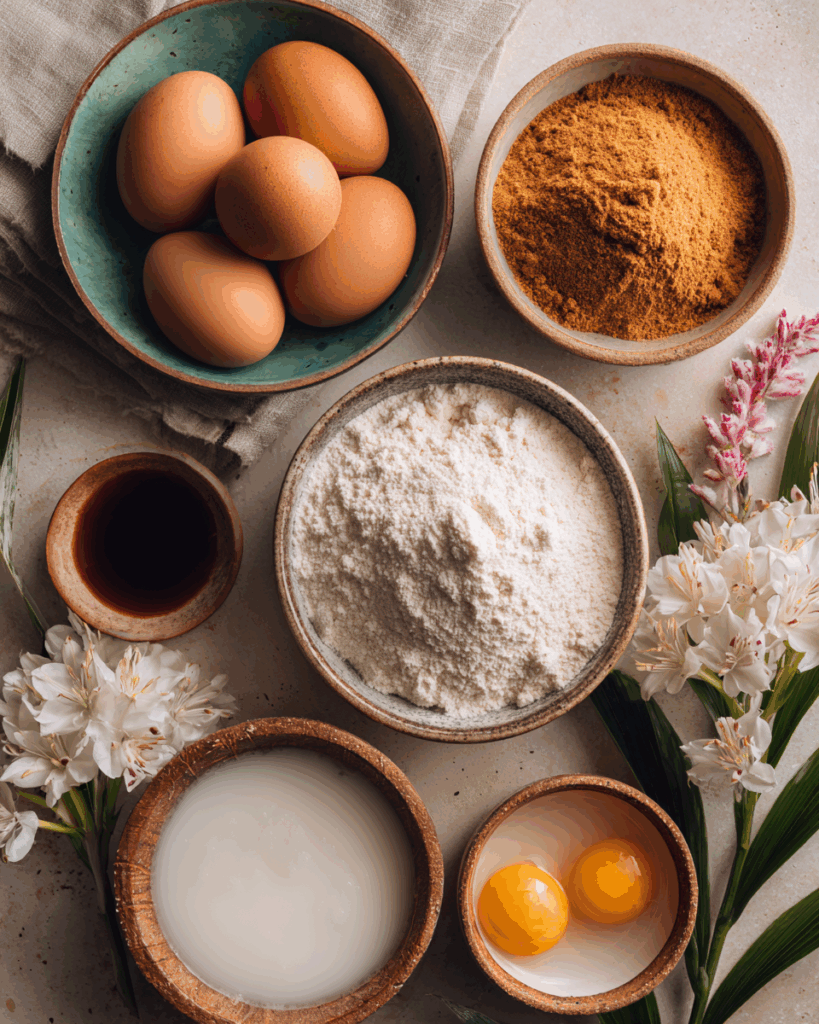
To make Thai Coconut Custard, you don’t need a pantry full of exotic products—just a handful of ingredients that work harmoniously together to create something smooth, fragrant, and decadent. This minimalism is part of the dessert’s beauty. Yet, each ingredient carries a special role in crafting that authentic Thai flavor.
Here’s a quick look at the Thai coconut custard ingredients and why each one matters:
| Ingredient | Role in the Recipe |
|---|---|
| Eggs | Form the base structure, giving it a silky set |
| Palm Sugar | Offers complex, caramel-like sweetness |
| Coconut Milk | Provides richness, tropical aroma, and moisture |
| Jasmine Extract | Adds floral, calming notes |
Some traditional Thai versions include a pinch of salt to balance the sweetness or pandan extract to color the custard green and give it a vanilla-like scent.
For a more traditional approach to coconut-rich Thai sweets, Hungry in Thailand explains Thai Coconut Custard Dessert with vivid historical insights and serving tips.
Choosing Quality Ingredients
The quality of your ingredients makes a big difference in your final result. Let’s break it down:
- Coconut Milk: Choose full-fat, unsweetened coconut milk for the creamiest consistency. Avoid coconut beverages or lite coconut milk.
- Palm Sugar: Look for unrefined palm sugar discs from Asian groceries—they melt slowly and offer rich depth compared to white sugar.
- Jasmine Extract: This floral essence isn’t always easy to find, but it’s worth the search. If unavailable, pandan extract is a great alternative.
- Eggs: Use fresh, room-temperature eggs. Their freshness will give your custard the proper structure and rich yellow tone.
Curious how others handle ingredients like pandan and coconut in their versions? Check out Hot Thai Kitchen’s Pandan Coconut Custard for a beautiful variation that introduces color and flavor with a Thai twist.
Optional Add-ins and Substitutions
Need to adapt the recipe to dietary needs or available ingredients? Here are some common tweaks:
- Brown Sugar or Coconut Sugar instead of palm sugar – works well but the flavor will be slightly different.
- Pandan Juice or Extract instead of jasmine – gives it a green hue and a sweet, grassy aroma.
- Coconut Cream for a richer, more indulgent custard.
These adjustments still deliver a great dessert while giving you room to play with the flavor. Some versions, like Thai coconut rice custard (kanom tuay), even include tapioca or rice flour for structure. Lion Brand’s Kanom Tuay Recipe shows how this version differs in texture and serving.
Ingredient Ratios for Success
Getting the balance right between egg, sugar, and coconut milk is key. Too much egg, and the custard becomes rubbery. Too much sugar, and it overwhelms the delicate coconut flavor. A common ratio is:
- 1 egg per ¼ cup of coconut milk
- 1.5 tablespoons palm sugar per egg
This simple formula helps you scale the recipe up or down as needed. For an ultra-easy walk-through, Cooking With Lane shares her Thai Custard Recipe with excellent insight into ingredient balance and steaming techniques.
What’s the Difference Between Thai Coconut Custard and Coconut Cream?
Many people ask, “Is coconut cream the same as coconut custard?” Not quite. Coconut cream is a thick, fatty layer skimmed from the top of coconut milk, often used in curries or desserts to add richness. Thai coconut custard, on the other hand, is a cooked dessert combining coconut milk (or cream), eggs, and sugar. They’re not interchangeable in recipes unless carefully adjusted.
To see how other Thai desserts use coconut, explore The Spruce Eats’ Thai Banana Coconut Custard—a delicious variation that blends fruit with custard for extra flavor.
Step-by-Step Thai Coconut Custard Recipe Easy Version
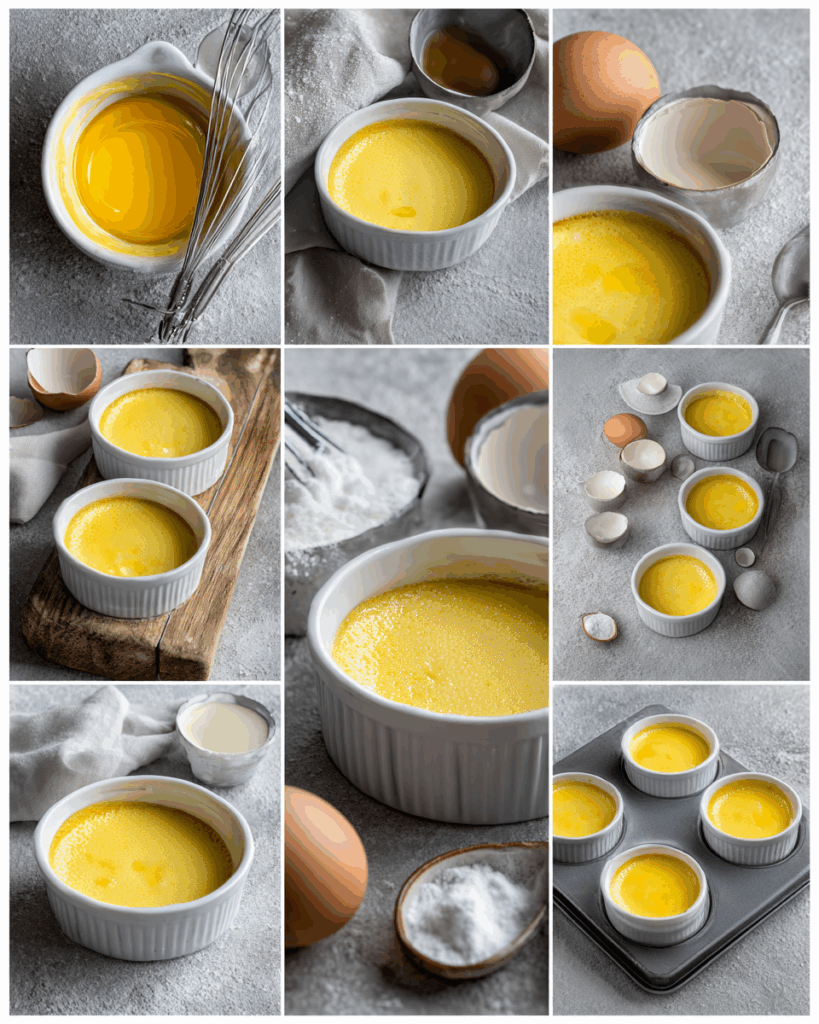
Mastering the Method: Thai Coconut Custard Recipe Made Easy
Now that we’ve broken down the ingredients, let’s walk through how to make the most delicious Thai coconut custard at home. This method is ideal for beginners and gives results that taste like they came straight out of a Thai kitchen.
This Thai coconut custard recipe easy method follows traditional preparation techniques with modern oven-baking, making it more accessible than stovetop steaming.
Ingredients You’ll Need
To prepare 4 servings of classic Thai coconut custard, gather these essentials:
- 4 eggs (room temperature)
- 6 tablespoons palm sugar
- 1 cup full-fat coconut milk
- 1 teaspoon jasmine extract (or pandan extract for a green version)
Optional: A pinch of salt to balance sweetness.
These ingredients offer the authentic taste expected from a traditional Thai custard recipe, while also being friendly to most dietary preferences—dairy-free, gluten-free, and made with real food ingredients.
Step-by-Step Instructions
Step 1: Preheat the Oven
Set your oven to 300°F (150°C). This low temperature is crucial for slow, gentle baking that gives custard its creamy, smooth texture.
Step 2: Combine Eggs and Sugar
In a large mixing bowl, crack the eggs and whisk them gently. Add the palm sugar and continue whisking until the sugar is completely dissolved and the mixture is light in color. Don’t beat too hard—you want to avoid incorporating air bubbles.
Step 3: Add Coconut Milk and Flavoring
Pour in the coconut milk and add the jasmine extract. Continue whisking until the mixture is fully blended. The texture should be smooth and slightly thick.
Step 4: Strain the Mixture (Optional but Recommended)
For the creamiest result, strain the mixture through a fine mesh sieve to remove any egg solids or bubbles. This helps produce that ultra-silky custard texture Thai desserts are known for.
Step 5: Fill the Ramekins
Divide the custard mixture evenly among 4 ramekins or small ceramic cups. Fill them about ¾ of the way.
Step 6: Prepare the Water Bath
Place the ramekins inside a larger baking dish or roasting pan. Carefully pour boiling water into the outer pan, making sure it comes about halfway up the sides of the ramekins. This method prevents the custard from cracking or curdling.
Step 7: Bake Slowly
Carefully transfer the entire pan to the oven and bake for 90 minutes. Do not open the oven door too often—consistency in heat is essential.
Step 8: Test for Doneness
Insert a toothpick or thin knife into the center of a custard. It should come out mostly clean, with only a slight jiggle in the center.
Step 9: Cool and Serve
Remove the ramekins from the water bath and allow them to cool. Refrigerate for at least 2 hours before serving cold. The texture improves as it chills, becoming firm and luscious.

Tips to Perfect Your Thai Coconut Custard
- Avoid Overbaking: If the custard gets too firm or rubbery, it’s likely overbaked. Watch for that slight jiggle in the center.
- Use a Water Bath: Always bake your custard in a water bath. It distributes heat evenly and prevents cracking.
- Flavor Variations: Want a twist? Add mashed ripe bananas for a hybrid Thai banana coconut custard, or a layer of cooked sticky rice for a classic street dessert feel.
Serving Suggestions
This custard can be served on its own or paired with Thai sticky rice for a heartier dessert. For a modern spin, try topping it with toasted coconut flakes, roasted mung beans, or sesame seeds.
Whether you’re preparing it for a dinner party or enjoying it as a weekday treat, this Thai coconut custard recipe proves that delicious doesn’t have to mean complicated.
Thai Coconut Custard Variations
Discover the Many Faces of Thai Coconut Custard
While the classic baked version is a favorite in Thai households, Thai Coconut Custard is incredibly versatile. From celebratory cakes to street-style sticky rice pairings, there’s a version of this dessert for every mood and occasion.
Let’s explore the most delicious and creative ways this custard shows up across Thai cuisine—and how you can make these variations at home.
1. Thai Coconut Custard Cake
This version is a layered dessert that combines the richness of custard with the softness of sponge cake. Often referred to in Thailand as kanom maw kaeng, this Thai coconut custard cake features a dense, almost fudge-like texture from the custard that sits atop a tender base of coconut-infused cake.
To make it:
- Bake a thin layer of sponge cake or sticky rice cake.
- Pour the custard mixture over it (as described in Part 3).
- Bake both layers together until set.
Once cooled, it slices beautifully and is perfect for celebrations, birthdays, or even afternoon tea. You can also top it with caramelized shallots or toasted coconut for added crunch and contrast—a traditional Thai touch.
This dessert offers the comforting softness of cake with the rich depth of custard, making it a showstopper for those looking to elevate their Thai dessert repertoire.
2. Thai Custard and Sticky Rice
One of the most iconic pairings in Thai cuisine is Thai custard and sticky rice, known locally as Sangkaya with Khao Niew. This version elevates the custard to a hearty street food classic, often wrapped in banana leaves and sold warm.
To assemble:
- Cook glutinous (sticky) rice and sweeten it lightly with coconut milk and sugar.
- Slice or scoop the chilled custard on top.
- Optionally garnish with mung beans or sesame seeds.
What makes this dish so beloved is the contrast of textures: the sticky, chewy rice plays beautifully against the soft, creamy custard. It’s filling, fragrant, and comforting all at once.
This variation is especially popular during Thai New Year or temple festivals, but you can enjoy it year-round with minimal effort if you prep your rice ahead of time.
3. Thai Dessert with Coconut Milk and Tapioca
Although technically not the same dessert, this variation is part of the larger Thai custard family and deserves a mention. Thai cuisine features many Thai desserts with coconut milk and tapioca, like saku and bua loy.
To incorporate the custard idea:
- Cook small tapioca pearls in coconut milk sweetened with palm sugar.
- Instead of setting it in ramekins, fold in gently whipped egg yolks to thicken.
- Chill and serve it in bowls, topped with banana or mango slices.
The texture is pudding-like rather than fully set, giving you a spoonable dessert with a luxurious mouthfeel. It’s perfect for those who love Thai custard flavor but prefer a less dense consistency.
This creamy pudding version also fits perfectly into menus where a lighter dessert is needed after a spicy meal.
4. Thai Banana Coconut Custard
If you’re a banana lover, this is the variation for you. Thai banana coconut custard is often baked or steamed with sliced ripe bananas folded into the custard base. The bananas add natural sweetness, soften beautifully during cooking, and create a dessert with depth and fruit-forward flavor.
To try it:
- Slice 2 small ripe bananas into the basic Thai coconut custard mixture.
- Pour into ramekins and bake or steam as usual.
- Sprinkle cinnamon or nutmeg on top before serving (optional).
The bananas caramelize slightly while baking, giving this version a dessert-like banana bread profile—yet it still stays true to its Thai roots thanks to the coconut milk and palm sugar.
This version is a favorite for kids, guests, or anyone looking for a comforting twist on the traditional custard.
5. Pandan Coconut Custard (Green Thai Custard)
Finally, let’s talk about the green one. Why is Thai custard green? It’s due to the use of pandan juice—a natural, aromatic extract from pandan leaves. When added to the custard mixture, it not only gives a vibrant green color but also infuses it with a vanilla-like fragrance.
Pandan coconut custard is wildly popular in Thailand, often served in small ceramic cups (kanom tuay) or cut into square blocks.
Here’s how to incorporate pandan:
- Blend pandan leaves with a bit of water and strain to extract the juice.
- Replace the jasmine extract in the original recipe with 1 tablespoon pandan juice.
- Follow the same baking or steaming process.
This version is often seen in market stalls and temple fairs. The color is not just eye-catching—it also signals to Thai locals that this is a nostalgic, authentic version of their favorite dessert.
Texture and Flavor Profile
What Does Thai Coconut Custard Taste Like?
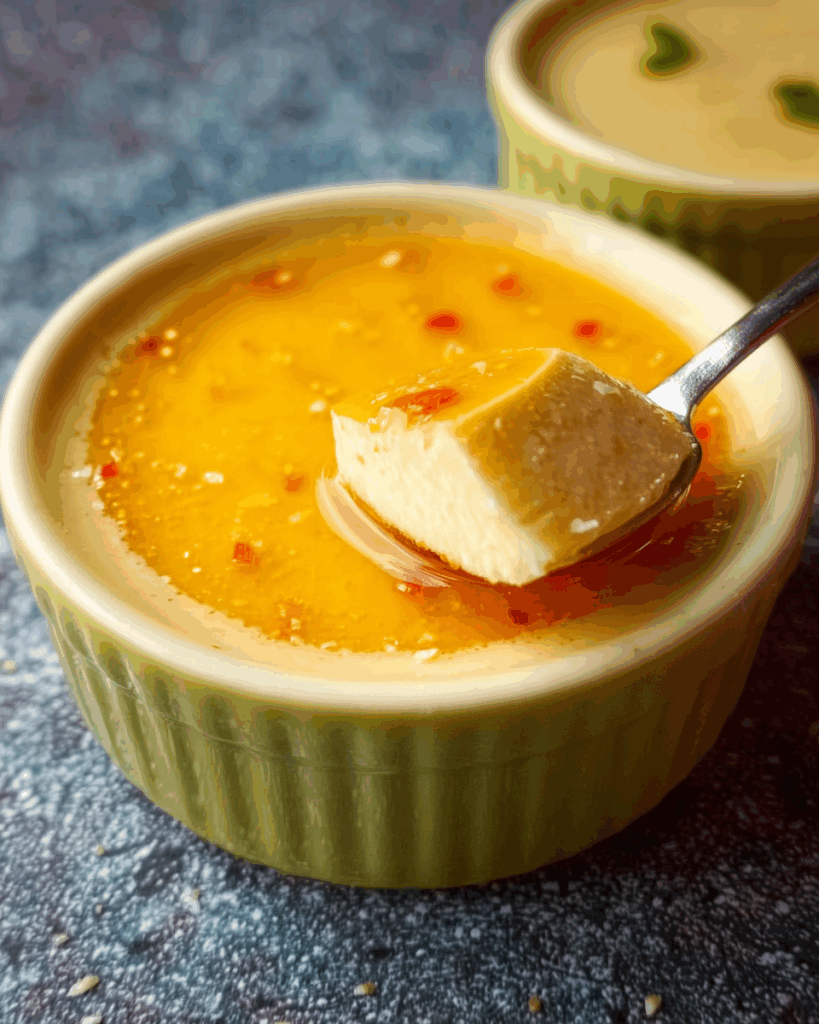
The moment you take a bite of Thai Coconut Custard, you’re met with a soft, velvety texture that gently melts in your mouth. It’s rich yet light, subtly sweet with deep earthy notes from palm sugar, and beautifully perfumed with coconut and floral undertones.
The taste is soothing and layered. You don’t get hit with an overwhelming sweetness—instead, it unfolds gradually. The coconut milk gives it that luscious, tropical body, while the jasmine or pandan infusion teases the palate with gentle floral hints. Together, it’s a flavor experience that’s both comforting and exotic.
Many people compare it to flan or crème brûlée, but Thai custard is far more delicate. There’s no crusty top or sharp sweetness—just smooth, custardy bliss from start to finish.
This flavor combination is especially beloved because it doesn’t try too hard. The dessert feels naturally balanced, making it a favorite among those who appreciate subtly sweet dishes.
The Ideal Texture: What to Expect
Texture is a key player in Thai desserts, and Thai coconut custard nails it. Depending on how it’s cooked (steamed or baked), the texture can vary slightly:
| Cooking Method | Texture Outcome |
|---|---|
| Steamed | Very soft, smooth, and slightly jiggly like silken tofu |
| Baked | Firmer, denser, with a more sliceable finish |
In both cases, the custard should hold its shape but still feel tender when spooned. When properly made, there should be no cracks, bubbles, or curdling—just a smooth surface and a creamy interior that glides across your tongue.
Many versions of Thai custard recipe are made intentionally light to suit hot weather climates. Unlike Western custards that may rely on heavy cream or thickening agents, Thai coconut custard keeps it simple—and the result is refreshingly airy and less fatty.
Texture Enhancements Across Variations
If you explore other forms of Thai coconut custard, like Thai custard and sticky rice or Thai coconut custard cake, you’ll notice how the texture adapts to each dish’s purpose.
- With sticky rice: The softness of the custard contrasts with the chewy rice, creating a rich textural blend.
- In cake form: The custard becomes more compact, dense, and fudge-like to stand up as a top layer.
- With tapioca: The custard leans toward a pudding texture, with added chew from the pearls.
All of these showcase the flexibility of this dessert—not just in flavor, but in mouthfeel. That’s what makes it such a beloved part of Thai culinary tradition.
Smell and Visual Appeal
We often eat with our eyes and nose before we taste anything—and Thai coconut custard excels in both departments.
- Smell: Expect a warm, cozy coconut aroma, accented with jasmine or pandan. This alone can transport you straight to a Thai street market or family kitchen.
- Appearance: The classic version is pale yellow or cream-colored. When pandan is used, it turns a vibrant green—visually striking and culturally iconic.
It’s not uncommon to see Thai coconut custard served in banana leaf wrappers, tiny ceramic dishes, or neatly sliced squares, often garnished with coconut flakes or mung beans. Its simple elegance makes it perfect for both casual meals and festive occasions.
The Role of Coconut in Thai Desserts
Coconut: The Heartbeat of Thai Sweets
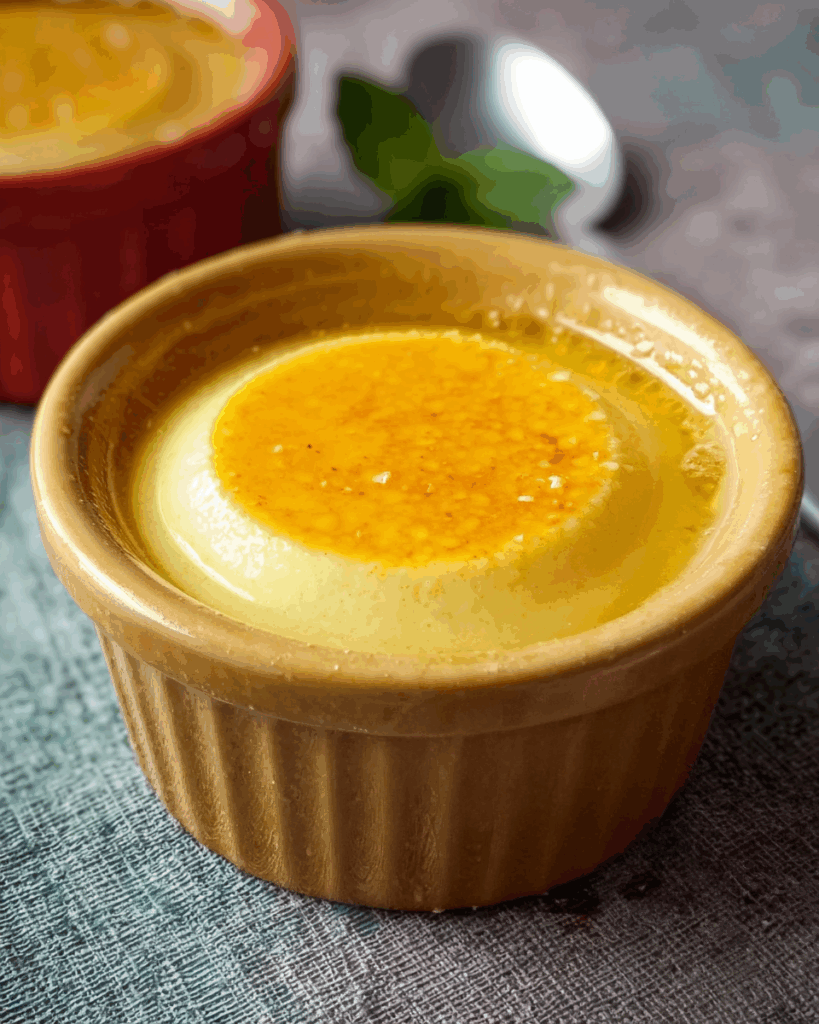
In Thai desserts, coconut is more than just a flavor—it’s a tradition. From coconut milk to coconut cream and toasted coconut flakes, nearly every Thai sweet has some version of this tropical ingredient. Thai Coconut Custard is one of the most iconic ways coconut is showcased, thanks to its rich, smooth texture and unmistakable aroma.
What makes coconut milk so special in Thai sweets is its unique ability to bring both flavor and mouthfeel. It adds moisture, fat, and fragrance, creating a dessert that feels luxurious without needing dairy or butter. That’s why desserts like Thai coconut custard with coconut milk have such a distinctive identity.
Whether you’re enjoying custard, pudding, sticky rice, or coconut jellies, chances are coconut milk plays a starring role. Its ability to absorb and enhance spices and aromatics—like pandan and jasmine—makes it essential in achieving authentic Thai taste.
Coconut Milk vs Coconut Cream vs Coconut Custard
One of the most common questions is:
Is coconut cream the same as coconut custard?
The short answer is: No.
Let’s break it down:
| Term | Description |
|---|---|
| Coconut Milk | A thinner, more fluid liquid made by soaking grated coconut flesh in water and straining it. Used in both sweet and savory Thai dishes. |
| Coconut Cream | Thicker, richer version of coconut milk, with a higher fat content. Skimmed from the top layer of coconut milk or sold separately. |
| Coconut Custard | A finished dessert made by combining eggs, sugar, and coconut milk (not just cream) and cooking it gently until it sets. |
Coconut milk is the most common base for Thai desserts. It gives custards that melt-in-your-mouth feel. Coconut cream, while richer, can make the texture too thick or fatty if used excessively. Thai coconut custard specifically requires the lighter balance that coconut milk offers to achieve that silky-smooth finish.
In fact, the magic of Thai custard comes from the interaction of coconut milk and eggs—a balance that forms a gel-like texture when gently heated. It’s this synergy that makes Thai custard so unique compared to Western versions, which often use dairy.
Coconut in Other Thai Dessert Styles
While custard is a favorite, coconut also shines in many other traditional Thai sweets:
- Sticky Rice with Coconut Cream: Found in dishes like mango sticky rice or custard rice wraps.
- Coconut Tapioca Pudding: Uses small tapioca pearls boiled in sweetened coconut milk for a creamy, chewy dessert.
- Coconut Jellies and Cakes: Often set with agar or rice flour, offering bouncy textures and light sweetness.
In all these, coconut’s role is consistent—it’s there to enhance texture, add moisture, and bring out the natural sweetness of the other ingredients.
So when you’re tasting Thai coconut custard, you’re really experiencing the essence of Thai dessert-making. It’s not just about sugar and eggs—it’s about honoring the balance and subtlety that coconut brings to every bite.
Pandan’s Secret in Thai Custard
Why Is Thai Custard Green?
If you’ve ever stumbled upon a green-colored Thai dessert and wondered, “Why is Thai custard green?”, you’re not alone. The answer lies in a beloved Thai ingredient called pandan—a fragrant tropical plant often referred to as “Asian vanilla.”
In many traditional versions of Thai coconut custard, pandan juice is added to the mixture. This does two things:
- Adds a vibrant green color, completely natural and chemical-free.
- Infuses the dessert with a sweet, grassy aroma that balances the richness of the coconut milk and eggs.
So the green isn’t just for looks—it’s flavor-packed and authentic. The deeper the green, the more pandan used.
This variation of the custard is especially common in street food settings and during cultural festivals. It’s usually steamed in small ceramic cups or served in banana leaf boats, and it’s one of the most nostalgic desserts for Thai locals.
This pandan version is also called Sangkaya Bai Toey, translating to “pandan custard.” The color alone draws attention, but the fragrance is what makes it unforgettable.
How to Make It Green: The Pandan Process
Creating green Thai coconut custard at home is easier than it looks. Here’s how:
- Fresh Pandan Leaves: If you can find them (usually in Asian markets), blend with a small amount of water, then strain to collect the bright green juice.
- Pandan Extract or Paste: A quicker alternative if fresh leaves are unavailable. Use only a few drops—it’s potent.
Once you’ve got the pandan ready, substitute it for jasmine extract in your standard custard mixture. The rest of the recipe remains the same.
This little tweak transforms your custard into a version that’s uniquely Thai and visually impressive, making it a favorite for special occasions and celebrations.
Jasmine vs Pandan: Choosing the Right Aroma
Traditional Thai coconut custard is made with jasmine extract, which offers a floral, soothing note. But pandan gives a sweeter, more earthy profile—and of course, the signature green color.
| Flavoring | Aroma | Use Case |
|---|---|---|
| Jasmine Extract | Light, floral | Classic custard version |
| Pandan Juice | Sweet, grassy | Green pandan variation (Sangkaya Bai Toey) |
You can even blend both if you like—a small drop of jasmine alongside pandan gives depth and complexity without overpowering either one.
Visual Appeal in Thai Culture
Green desserts hold a special place in Thai cuisine. Green, especially from pandan, is associated with freshness, health, and nature. In Thai desserts, it also signals authenticity and tradition.
That’s why green Thai coconut custard is often the go-to version in temples, weddings, and family celebrations. Its scent brings comfort, and its color brings joy. It’s more than a dessert—it’s a cultural symbol.
So next time you see that bright green custard, don’t hesitate. It’s not just eye-catching—it’s one of Thailand’s most treasured dessert expressions.
Storage and Serving Suggestions
How to Store Thai Coconut Custard Properly
One of the best things about Thai Coconut Custard is how well it keeps. Whether you’ve made a big batch or just have a few leftovers, storing it the right way ensures it stays fresh, creamy, and flavorful for days.
Here’s how to do it:
- Cool It First: Before storing, let your custard cool completely to room temperature. This prevents condensation, which can ruin the texture.
- Use Airtight Containers: Store the custard in individual ramekins or transfer to airtight containers with lids. This prevents it from absorbing fridge odors.
- Refrigerate for Up to 3 Days: Thai coconut custard stays fresh and delicious in the fridge for up to 72 hours. The texture may even improve slightly as it firms up.
- Don’t Freeze It: Custard doesn’t freeze well. Freezing can separate the coconut milk and create a grainy, watery texture when thawed. It’s best enjoyed fresh or chilled—not frozen.
If you’re prepping for a dinner party or holiday feast, you can make the custard a day in advance. Just keep it covered and chilled, and it’ll be ready to serve cold or at room temperature.
Serving Thai Coconut Custard: Simple to Spectacular
Whether you’re serving this dish at a cozy family dinner or presenting it as the final course at a fancy dinner party, Thai coconut custard offers plenty of versatility. Here are some favorite ways to plate and serve it:
1. Chilled in Ramekins
Serve the custard cold, straight from the ramekin. Add a sprinkle of toasted coconut or sesame seeds on top for texture. A small mint leaf or edible flower makes for a lovely garnish.
2. With Sticky Rice
For a heartier dessert, pair slices of custard with warm sweet sticky rice. This transforms the dish into Thai custard and sticky rice, a street food classic that feels filling and indulgent. You can shape the sticky rice into small balls or serve it in layers under the custard.
3. Topped with Tropical Fruit
Add slices of ripe mango, banana, or papaya to complement the smoothness of the custard. The fruit’s natural sweetness works beautifully with the mellow coconut flavor.
4. In Banana Leaf Cups
For an authentic presentation, spoon the custard into small banana leaf cups. It’s a visually stunning option that evokes Thai markets and temple fairs.
5. As a Layered Cake
Create a modern twist by layering Thai coconut custard cake over a coconut sponge base. Once chilled and sliced, it makes an elegant, elevated dessert.
Tips for Best Experience
- Serve Chilled or Room Temp: Thai coconut custard tastes best cold but can also be served slightly warm if freshly baked.
- Pair with Thai Tea or Coffee: The smooth custard pairs beautifully with strong, sweet Thai iced tea or a dark roast coffee.
- Add a Textural Contrast: Garnish with crispy mung beans, coconut flakes, or even crushed roasted peanuts to create contrast.
No matter how you serve it, this custard is bound to impress. It’s rich but not heavy, sweet but balanced, and deeply satisfying without being overly complex. For home cooks looking for a dessert that’s both comforting and impressive, this one checks every box.
Nutritional Profile and Dietary Notes
Is Thai Coconut Custard Healthy?
At first glance, Thai Coconut Custard might seem like an indulgence—and it certainly tastes like one. But in comparison to many Western-style desserts, it’s surprisingly light and made with clean, real-food ingredients.
Here’s a rough breakdown of the nutrition for one standard serving (based on the classic recipe using 4 eggs, coconut milk, and palm sugar):
| Nutrient | Approximate Amount per Serving |
|---|---|
| Calories | 190–230 kcal |
| Fat | 14–18g (mostly from coconut milk) |
| Carbohydrates | 14–18g |
| Protein | 5–6g |
| Fiber | 0–1g |
| Sugar (Natural) | 10–12g |
While it does contain fat and sugar, both come from wholesome sources—coconut milk and palm sugar. There are no artificial preservatives or additives, and the dessert is naturally gluten-free and dairy-free, making it a smart option for those with sensitivities or dietary restrictions.
What gives this custard a nutritional edge is its simplicity. It’s made with only a handful of ingredients, no processed flours, and no refined white sugar.
Coconut Milk: The Healthy Fat Hero
Coconut milk provides medium-chain triglycerides (MCTs), a type of fat known to boost metabolism and support brain health. It also contains essential minerals like manganese and copper. While still calorie-dense, it’s more digestible than many other saturated fats.
Combined with protein-rich eggs, this custard becomes more than just a sweet—it can actually offer some satiation and nutritional value, especially when eaten in moderation.
Dietary Adjustments: Make It Work for You
Want to enjoy Thai coconut custard but need to modify it for your dietary goals? Good news: it’s very flexible.
1. Low-Sugar or Keto-Friendly
- Swap palm sugar with a natural low-carb sweetener like erythritol or monk fruit.
- Choose full-fat canned coconut cream instead of coconut milk for a higher fat ratio.
- Add a dash of cinnamon or nutmeg for added warmth without extra carbs.
2. Vegan Option
- Replace the eggs with a mix of silken tofu and cornstarch (for thickening).
- Blend until smooth and bake or steam as usual.
- Note: The flavor and texture will be different, but still enjoyable.
3. Paleo-Friendly
- Use coconut sugar instead of palm sugar.
- Ensure all ingredients are unprocessed and grain-free.
Allergy-Friendly Dessert Choice
For those avoiding dairy, wheat, or nuts, Thai coconut custard is a wonderful alternative. It checks the boxes for:
- Dairy-free
- Gluten-free
- Nut-free (unless you choose toppings like peanuts or mung beans)
This makes it one of the more inclusive Thai desserts, suitable for a wide range of diets and lifestyles.
Portion Control and Serving Frequency
Even though it’s made from whole ingredients, this custard is still a dessert. Portion control matters. A small ramekin-sized serving is just right to satisfy your sweet tooth without overdoing it.
You can also pair it with fiber-rich options like sticky rice or fruit to slow digestion and promote fullness.
Conclusion
Thai Coconut Custard is more than just a dessert—it’s a cultural treasure, passed down through generations and celebrated in homes, temples, and markets across Thailand. With its delicate balance of creamy coconut milk, earthy palm sugar, and floral notes from jasmine or pandan, it captures everything that makes Thai sweets so beloved: simplicity, elegance, and flavor depth.
Whether you prefer the classic yellow version, the vibrant green pandan twist, or a layered Thai coconut custard cake, this dish offers a variety of ways to enjoy it. It’s easy enough for beginners yet refined enough to impress at dinner parties. And thanks to its gluten-free, dairy-free nature, it suits many dietary lifestyles without sacrificing taste.
So the next time you’re craving something sweet, skip the store-bought treats. Reach for this authentic, satisfying dessert that’s as nourishing to the soul as it is delightful to the taste buds. Try it with sticky rice, fresh fruit, or simply as-is—and don’t forget to share it with someone who’s never had the pleasure of experiencing real Thai custard.
Looking for inspiration? Try our Thai Crispy Fried Chicken for a savory main that pairs perfectly with this custard as a sweet ending.
Frequently Asked Questions
Why is Thai custard green?
That distinctive green hue in some Thai custards comes from pandan, a tropical plant with a sweet, grassy aroma. The leaves are blended and strained to produce a naturally green extract, which is then mixed into the custard base.
This not only gives the dessert its eye-catching color but also infuses it with a fragrant, vanilla-like scent that’s beloved across Thai cuisine. When pandan is added to Thai coconut custard, it becomes Sangkaya Bai Toey—a pandan coconut custard that’s incredibly popular in Thailand.
Is coconut cream the same as coconut custard?
No, coconut cream and coconut custard are not the same thing.
Coconut cream is a thick, rich layer that separates from coconut milk. It’s often used to add richness to Thai curries or desserts.
Coconut custard, on the other hand, is a cooked dessert made by blending eggs, palm sugar, and coconut milk (not just the cream), then gently baking or steaming it until it sets into a soft, creamy texture.
While coconut cream may be one of the ingredients in custard, the two are not interchangeable.
What is in Thai coconut pudding?
While Thai coconut pudding and Thai coconut custard may look similar, they’re actually quite different. Thai coconut pudding typically includes coconut milk, sugar, a pinch of salt, and some kind of thickening agent like rice flour, tapioca flour, or agar-agar. Unlike custard, it usually doesn’t contain eggs and has a jiggly, bouncy texture.
It’s often served in small cups and is a popular street snack throughout Thailand. Some variations include toppings like shredded coconut, corn kernels, or sweet mung beans.
What is Thai custard made of?
Thai custard, or Sangkaya, is made with just a few simple ingredients: eggs, coconut milk, palm sugar, and a touch of flavoring like jasmine or pandan extract. Some versions include a pinch of salt or use pandan juice to give it a natural green color. These ingredients come together to form a silky, gently sweet dessert that’s steamed or baked until perfectly set.
It’s one of the most traditional desserts in Thai cuisine and showcases the beauty of minimal, real-food ingredients.
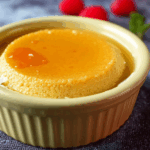
Thai Coconut Custard
- Prep Time: 10 minutes
- Cook Time: 90 minutes
- Total Time: 1 hour 40 minutes
- Yield: 4 servings 1x
- Category: Dessert
- Method: Baking
- Cuisine: Thai
- Diet: Vegetarian
Description
A rich, silky, and fragrant Thai coconut custard made with eggs, palm sugar, and jasmine extract. This easy dessert is baked to perfection in ramekins and served chilled for a deliciously creamy treat.
Ingredients
- 4 eggs
- 6 tablespoons palm sugar
- 1 cup coconut milk
- 1 teaspoon jasmine extract
Instructions
- Preheat oven to 300°F (150°C).
- In a bowl, whisk eggs and palm sugar until thoroughly combined.
- Add coconut milk and jasmine extract to the egg mixture and whisk well.
- Pour the mixture evenly into 4 ramekins.
- Place the ramekins into a large baking dish and fill the dish with boiling water until it reaches 3/4 the height of the ramekins.
- Bake in the preheated oven for 90 minutes or until a toothpick inserted comes out clean.
- Remove ramekins from water bath, let cool, then chill in the refrigerator before serving.
Notes
- For best flavor, use full-fat coconut milk.
- Palm sugar can be substituted with brown sugar if unavailable.
- The jasmine extract gives a subtle floral note; adjust amount to taste.
- Serve with fresh fruit or a sprinkle of toasted coconut for garnish.
Nutrition
- Serving Size: 1 ramekin
- Calories: 210
- Sugar: 12g
- Sodium: 50mg
- Fat: 15g
- Saturated Fat: 13g
- Unsaturated Fat: 2g
- Trans Fat: 0g
- Carbohydrates: 16g
- Fiber: 0g
- Protein: 5g
- Cholesterol: 140mg
Keywords: Thai coconut custard, Thai dessert, coconut milk custard, jasmine custard, baked custard, easy Thai custard recipe

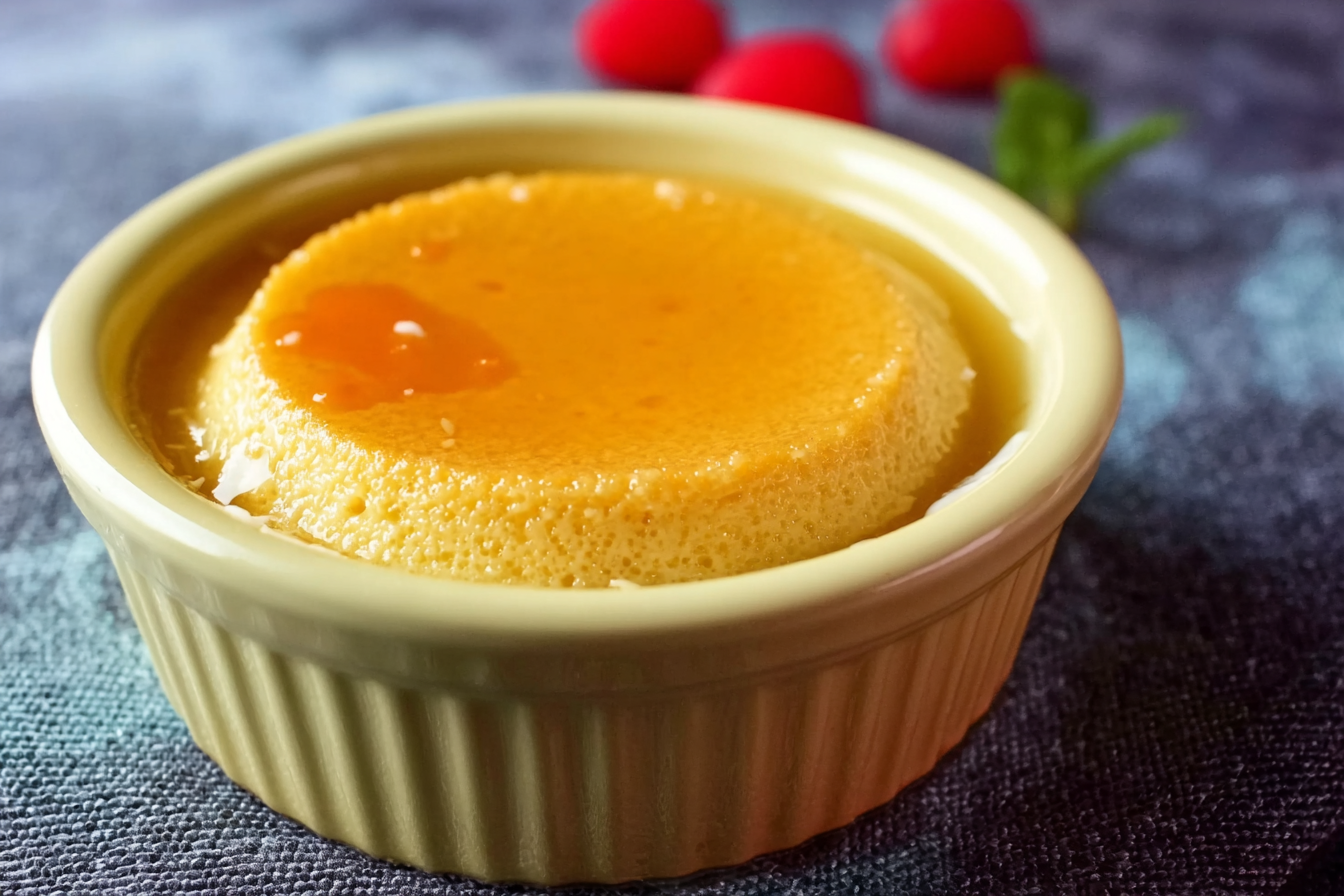
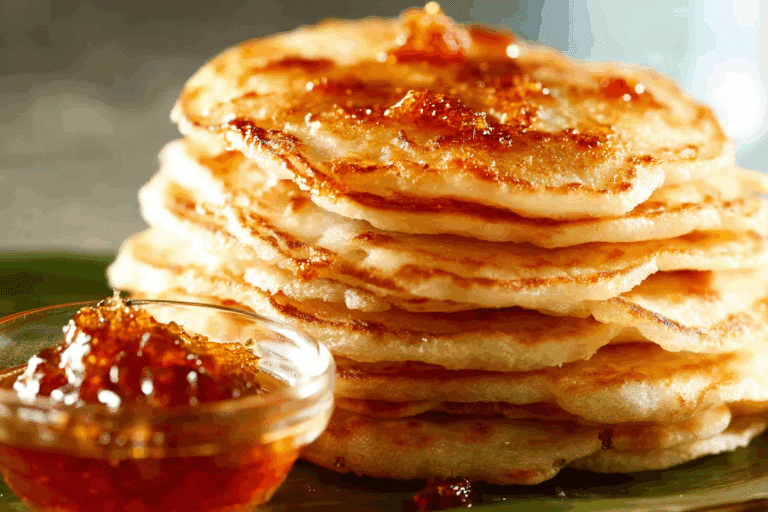
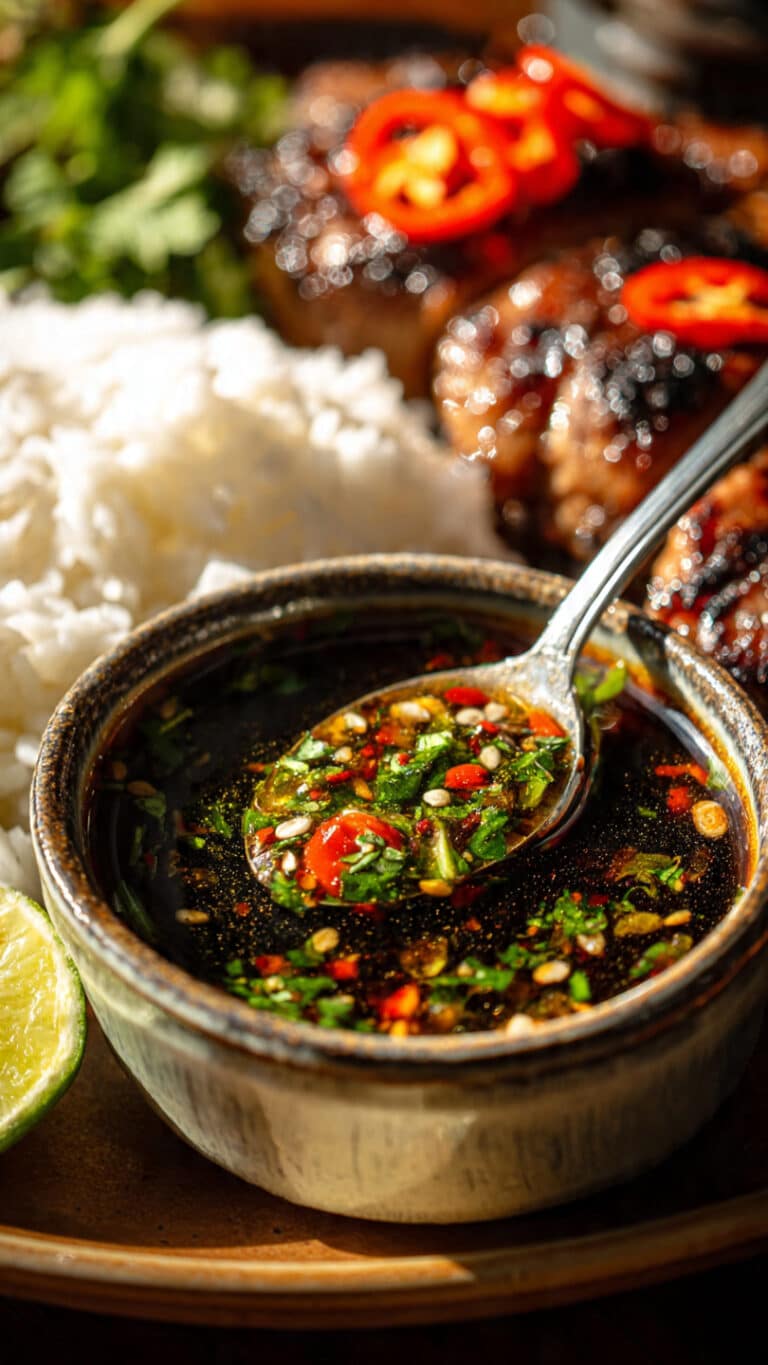
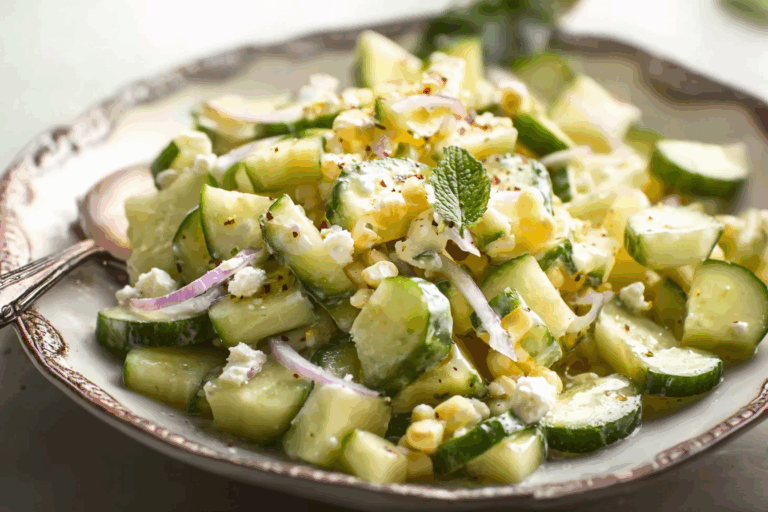
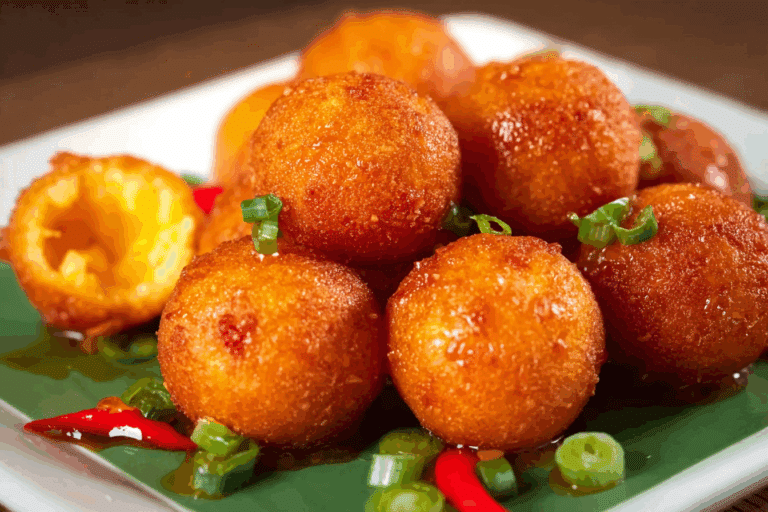
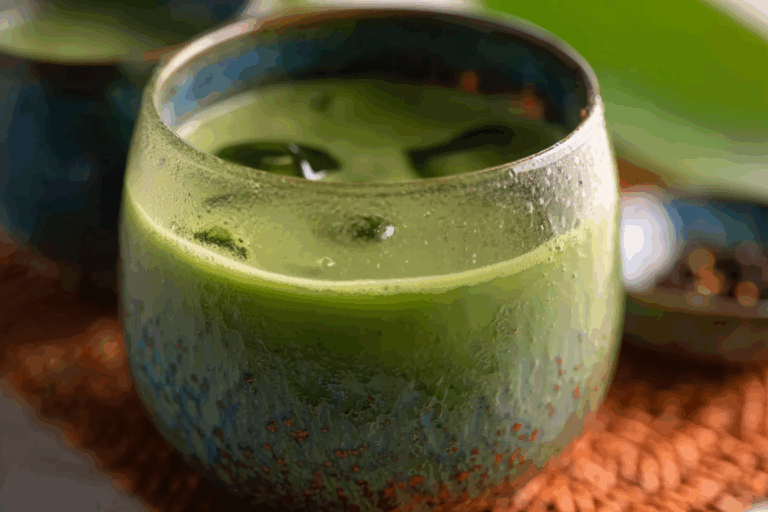
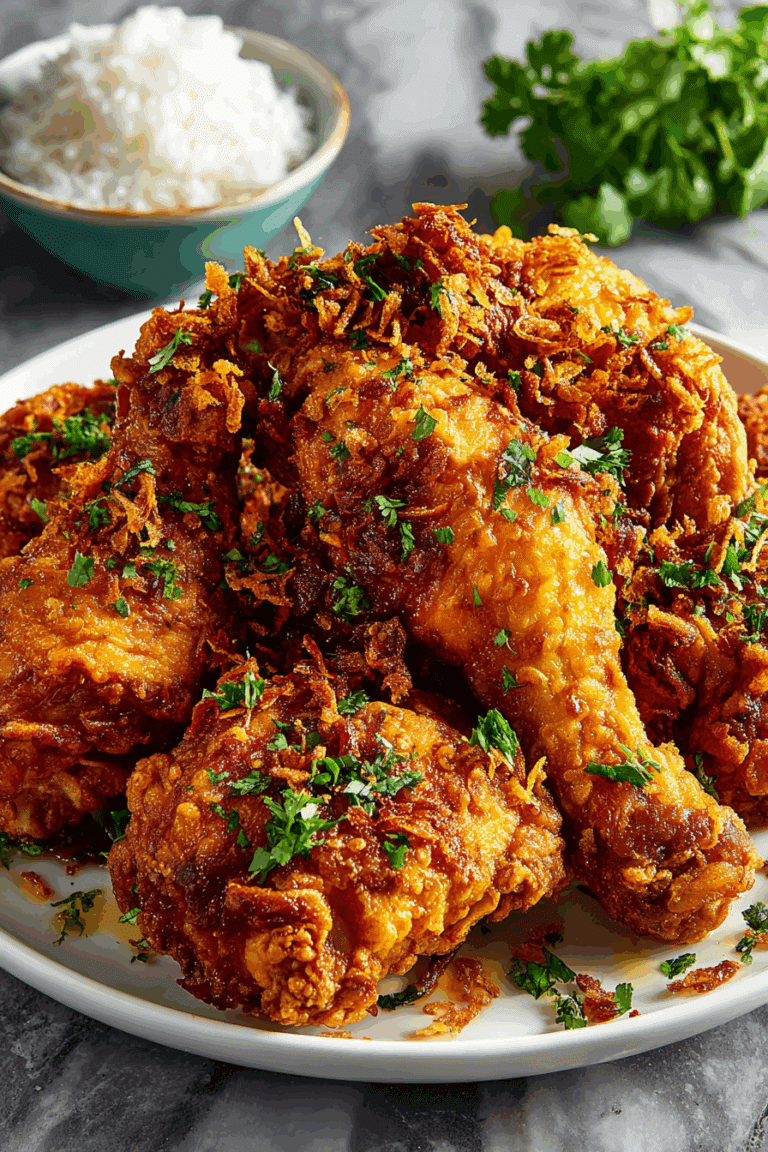
Thank you for sharing excellent informations. Your site is very cool. I’m impressed by the details that you have on this site. It reveals how nicely you understand this subject. Bookmarked this web page, will come back for extra articles. You, my friend, ROCK! I found simply the information I already searched all over the place and just couldn’t come across. What an ideal site.